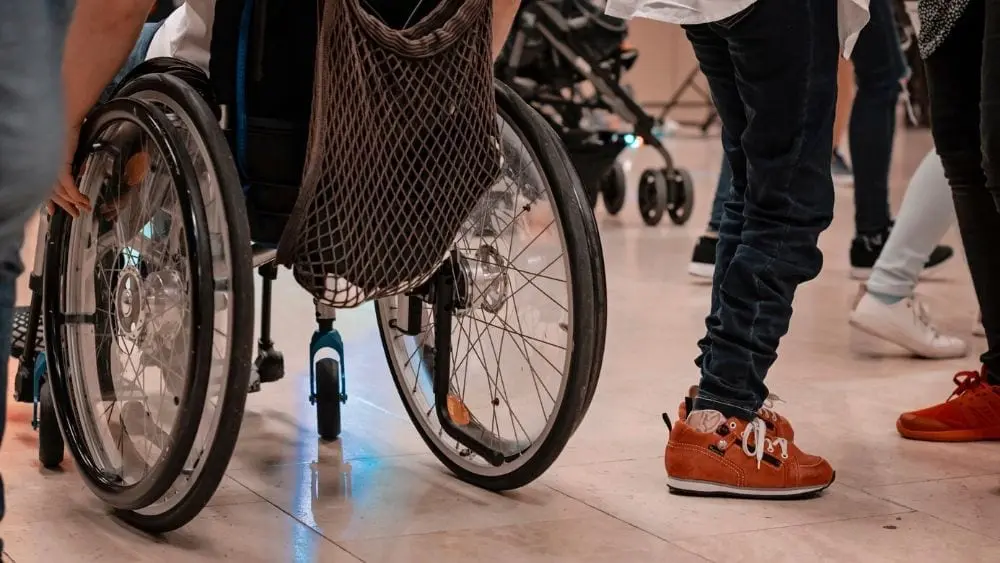
When a member of your family has special needs, designing a home takes on new meaning.
You’re no longer just worried with what will look great, you’re thinking about what will make it easy for every family member to enjoy your home with minimal fuss. Homes need to be safe, easy to get around in and provide efficiency in ways most of take for granted.
That’s the thinking behind the concept known as universal design, an approach that makes homes accessible to everyone, regardless of age or health quality. “Many people adapt to what is there, rather than adapting their home to them,” says South Florida interior designer Shelley Siegel, owner of Universal Design and Education Network.
What started out as a specialty associated with the elderly has ballooned into a market that caters to a wide variety of needs, both simple and complex. In recent years, families with children who have autism or conditions like cerebral palsy have sought the help of designers like Siegel who specialize in designing homes that enhance the lives of those who live in them. “We [also] have so many multi-generational families sharing homes and everyone has different needs,” Siegel says.
But even someone who suffers from arthritis can benefit from basic universal design principles. “It’s good design that anyone can use to make life safer and more convenient,” she adds.
Common recommendations include lowering light switches, thermostats and the like to make them easier to reach and changing all knobs and pulls to levers for greater ease of use. Most homes also have wood or otherwise smooth floors in lieu of carpet to avoid dust and make it easier to move around.
Before attempting any changes, however, ask for input from therapists, doctors or any other specialist involved in yours or your loved one’s care as well as your builder, recommends Ginger Rodriguez, an interior designer in Alexandria, Va., who specializes in creating rooms for children with special needs. This helps you create a design that will accommodate their needs not just today, but for months and years to come.
Here’s a rundown of general tips when you are designing spaces that accommodate family members with special needs, whether they get around in a wheelchair or have another condition that requires special attention to their environment:
The first tip is also the most obvious, but it bears noting that ramps into the house are key, so be sure to talk with your builder about installing them. Just remember to grade them in a way that makes it easy for someone to get in and out without feeling like they are climbing a steep hill. Also consider any back or side door entrances. The idea of universal design is to make it easy for everyone to enjoy a home from all points of entry and use.
In the Kitchen
When buying appliances, look for side by side ovens and refrigerators and front-load washers and dryers and make sure everything has the controls on the front (so long as they have kid-proof safety locks). This keeps folks from having to reach far back to turn something on or off.
Consider having a garbage disposal to minimize waste that has to be carried out, especially if the homeowner has special needs and will be living alone. Some designers also recommend a trash compactor to reduce the amount that has to be bagged and carried. If it’s an eat-in kitchen, make sure there is plenty of space underneath the table for someone in a wheelchair or with some kind of medical equipment to roll up and eat alongside the rest of the family.
Open space under countertops also allows a person to work on their own without having to move to another area of the room, like the table. Opt for smooth, granite-style countertops over tile. It is much easier to work on a flat surface where you can slide things down rather than pick them up in the event that you have limited upper body strength. Finally, lazy susans and open or sliding shelves make it easy for anyone to find something in a pantry or cupboard.
In the Bathroom
Opt for a handheld showerhead that can be manipulated with one hand without having to reach too far and consider a bath seat and transfer bench for anyone who can’t easily step in or out of the shower. A phone in the bathroom is always a good idea, in case of an emergency or even simply when a family member needs help. If someone in the family is sensitive to temperature changes, radiant heating on the floor or heated towel bars may be a good idea.
Universal design started out as a specialty associated with the elderly, but has ballooned into a market that caters to a wide variety of special needs, both simple and complex.In Doorways, Hallways and Stairwells
When building a new house, ask your builder to widen the frames for both doors and hallways to allow side-by-side walking or for someone on crutches or a wheelchair to come through. You may also want to remove all thresholds from doorways to keep anyone from getting stuck. Handles on both sides of staircases allow people to align themselves for better balance.
In Bedrooms
Make sure the person who is of most concern has a bedroom large enough to accommodate all of their equipment on the first floor. Rodriguez organizes closets and nightstands to keep medicines and any other items within arms’ reach. If someone needs access to drinks easily, a small fridge in the room is not a bad idea, either. This is also helpful for diabetics who may need to drink something after checking their insulin levels.
In the Living Room
Sturdy furniture is key, especially those with arms that can be used for assistance when getting up or sitting down, says Siegel. Avoid glare by having lights at eye level and on dimmers. Task lighting is ideal, but only as long as there are no exposed bulbs. Opt for wood over glass-top tables if people will need to lean on the table.
With just a few changes, your home can be accommodating to anyone with special needs, young or mature. Be sure to discuss your specific needs with your builder to ensure you are getting the right home that suits your and your family’s needs.

Ana Connery is former content director of Parenting, Babytalk, Pregnancy Planner and Conceive magazines as well as parenting.com.
While editor in chief of Florida Travel & Life magazine from 2006-2009, she covered the state’s real estate and home design market as well as travel destinations.
She’s held senior editorial positions at some of the country’s most celebrated magazines, including Latina, Fitness and Cooking Light, where she oversaw the brand’s “FitHouse” show home.
Ana’s expertise is frequently sought after for appearances on “The Today Show,” “Good Morning America” and CNN. She has interviewed the country’s top experts in a variety of fields, including U.S. Secretary of Education Arne Duncan and First Lady Michelle Obama.
 The New Hospitality: Designing for Airbnb
The New Hospitality: Designing for Airbnb